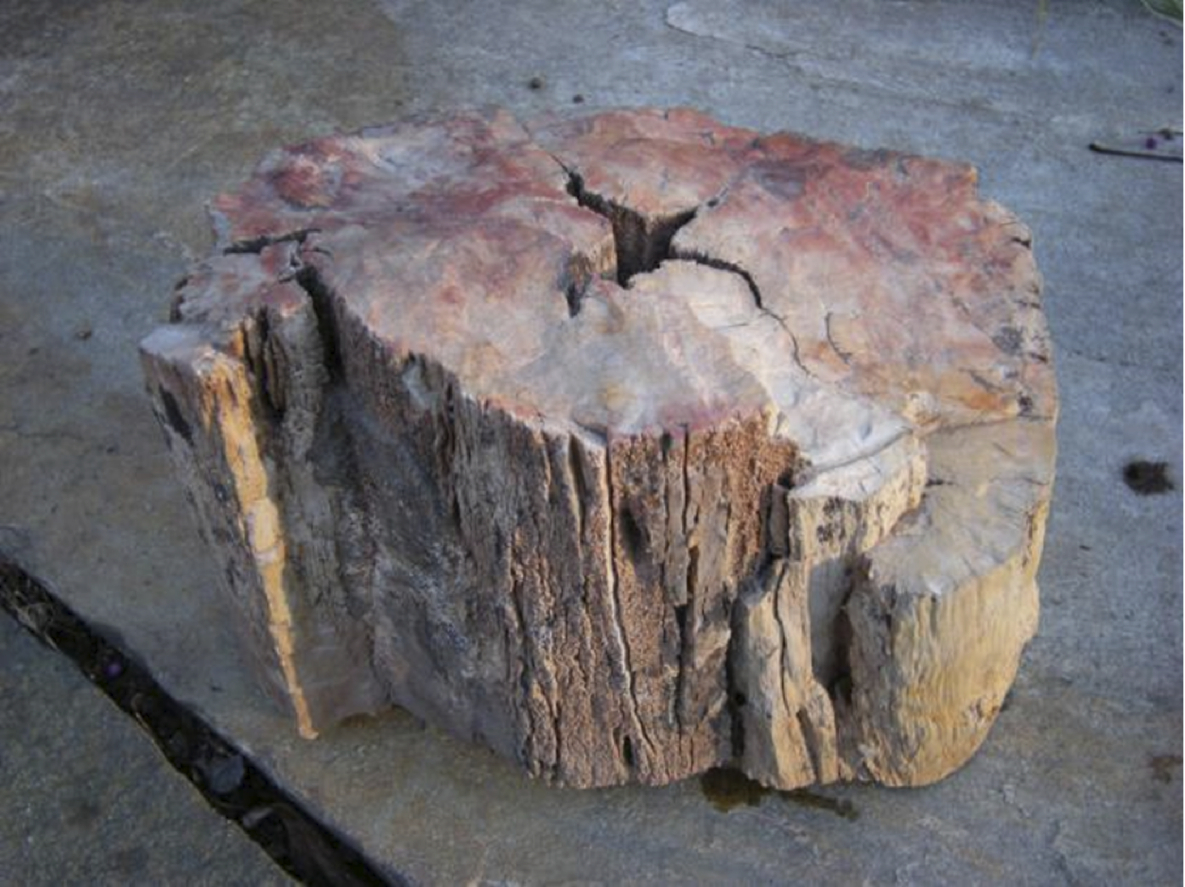Fire Stone: First Fire-Scorched Petrified Wood Found

SACRAMENTO, Calif. — After serving nearly 30 years as a doorstop for a nuclear physicist, a hunk of petrified wood from Arizona has finally been recognized as a one-of-a-kind find. The 210-million-year-old piece of wood contains the first fossilized fire scar ever discovered, researchers reported here this week at the Ecological Society of America's annual meeting.
Evidence for ancient forest fires predates the dinosaurs, but the clues come from charcoal, not from marks on fossilized trees. Charcoal remains of Earth's oldest fires date back more than 400 million years. No one has ever spotted a fire scar on petrified wood before, said lead study author Bruce Byers, a natural resources consultant from Falls Church, Virginia. That's because the scientists who study petrified wood rarely cross paths with forest fire researchers, Byers suspects. But Byers thinks more fossil fire scars will be found.
"Seeing patterns in nature probably requires a mental search image for those patterns," Byers said. "Disciplinary divisions may be a barrier for sharing those patterns, but I think if people start looking, they will see those patterns." [See Photos of the First Fire-Scarred Petrified Wood]
Fire stone
Byers spent two decades staring at his father's 16-pound (7 kilograms) doorstop before realizing it might be from a fire-scarred tree. His father, Cleo Byers, was a nuclear physicist for Los Alamos National Laboratory in New Mexico, and took his children on hikes throughout the Southwest, Bruce Byers said. The rosy-pink stone came home with father and son 28 years ago, after a hiking trip near Utah's Bears Ears Buttes. The colorful chunk was collected on national forest land, where it's legal to take petrified wood by permit, according to Byers, who has detailed the story on his blog. The petrified chunk likely came from the Chinle Formation, the same wood-rich rock layer that litters Arizona's Petrified Forest National Park with huge, crystallized trees. [Photos of Arizona's Amazing Petrified Forest]
Decades later, Bruce Byers took on a contract to help fire ecology researchers in Colorado's Front Range.
"I learned to recognize the distinctive patterns of modern fire scars, and I learned how important fire scars are in reconstructing the fire history of modern forests," Byers recalls.
Get the world’s most fascinating discoveries delivered straight to your inbox.
Afterward, on Byers' next visit to his parents' New Mexico home, the telltale signs of a fire scar jumped out from the familiar piece of petrified wood.
A fire-wounded tree valiantly tries to heal itself. The surviving wood hugs the fire scar, growing back over the raw, burned inner wood. The healing curls of wood leave a unique pattern of growth rays as they stretch around the trunk.
Byers' petrified wood had the healing curls. When the piece was cut and polished, he could also see a light-colored band dividing the pre- and post-fire growth, a mark that is also found in modern trees, as well as the unique growth-ray pattern.
Collecting clues
With networking and cold calls, Byers put together a dream team that could help him polish his findings and publish the results in a scientific journal. The study will appear Oct. 1 in the journal Palaeogeography, Palaeoclimatology, Palaeoecology. His collaborators include the University of New Mexico's Sidney Ash, who may have looked at more petrified wood from the Southwest than anyone else on Earth; Dan Chaney, an expert on ancient plants at the Smithsonian National Museum of Natural History; and Lucía DeSoto, a professor at Portugal's University of Coimbra and a leader in analyzing tree growth, cell by cell.
One of the team's key findings was that the petrified tree seemed to react to fire stress in the same way as modern trees. Stress from forest fires can leave behind bands of narrow tree rings in some modern trees, a result of the struggle to recover and grow. The ancient tree was a species called Agathoxylon arizonicum, a species that never forms growth rings. However, its microscopic tree cells, called tracheids — internal highways that transfer water and nutrients — show signs of fire stress in a manner similar to tree rings. Six to eight rows of tiny tracheids suggest suppressed growth immediately after the fire, the researchers report. The next rows are bigger than prefire tracheids, likely because the forest fire's survivors had less competition for water and nutrients, Byers said. This post-fire growth spurt is also seen in modern trees.
Rethinking the past
If more evidence for fire damage turns up in ancient wood, will ecologists reconsider the impacts of fire on plant evolution? In the Cretaceous Period, between 120 million and 65 million years ago, researchers now think wildfires helped trigger the development of the first flowering plants.
No one knows for sure what the Chinle Formation's trees looked like, but some researchers think they resembled monkey puzzle trees, the evergreen conifers from Chile that drop their lower branches until only an umbrella-shaped top remains. That's a classic fire adaptation (so ground fires can't climb up lower branches), Byers points out.
"I think fire has been a selective force in forests since way, way back," he said.
EmailBecky Oskin or follow her @beckyoskin. Follow us @livescience, Facebook & Google+. Original article on Live Science.



